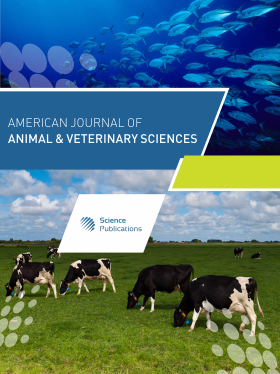Butyrate-Mediated Genomic Changes Involved in Non-Specific Host Defenses, Matrix Remodeling and the Immune Response in the Rumen Epithelium of Cows Afflicted with Subacute Ruminal Acidosis
- 1 University of Guelph, Canada
- 2 University of Vermont, United States
- 3 University of Manitoba, Canada
- 4 University of Kentucky, United States
Abstract
Subacute Ruminal Acidosis (SARA) is a disorder in cattle which can lead to chronic inflammation in the rumen epithelium, known as rumenitis. Butyrate has been shown to attenuate some of the detrimental effects of inflammatory gastroenteral disorders but the molecular mechanisms mediated by butyrate have not been defined. The objective of this study was to define the inflammatory-related genomic changes responsible for the beneficial effects of butyrate. Experimentally, 16 fistulated dairy cows at mid-lactation were fed a SARA-inducing (45% non-fiber carbohydrate) diet beginning 2 days before the beginning of treatment and continuing throughout the experiment. Cows were then evenly divided into treatment groups where a carrier with (n = 8) or without (n = 8) supplemental butyrate (2.5% initial DM intake) was deposited into the rumen daily for 7 days. The minimum rumen pH was higher in cows with supplemental butyrate (4.96±0.09 to 5.20±0.05, p = 0.040), but mean pH, maximum pH and the duration for which rumen pH was below 5.6 was unaffected. Free plasma Lipopolysaccharide (LPS) concentration was unaffected by treatment as was the concentration of Serum Amyloid A (SAA), although the LPS Binding Protein (LBP) concentration was increased by the addition of butyrate to the rumen (6.91±0.29 to 7.93±0.29 µg mL-1, p = 0.024). Of the rumen Short Chain Fatty Acids (SCFA) tested, only butyrate showed a pronounced treatment effect, rising from 8.60±0.94 to 21.60±0.94 mM (p≤0.0001). Plasma Beta-Hydroxybutyrate (BHBA) concentration also increased (799.50±265.24 to 3261.63±265.24 µM, p≤0.001). Butyrate infusion did not affect milk parameters (total fat, lactose, total protein and LOS); however, when related to dry matter intake, milk production efficiency was increased (p = 0.035). Microarray and qRT-PCR analyses of rumen papillae biopsies collected on day 7 found that butyrate administration affected (p≤0.05) the expression of genes involved in Non-Specific Host Defense (NSHD), Remodeling or adaptation (RM) and Immune Response (IR). Of the 49 genes tested by qRT-PCR, 9 (LCN2, MMP1, MUC16, GPX2, CSTA, FUT1, SERPINE2, BCAM, RAC3) were upregulated, 20 (MTOR, AKIRIN2, NFKBIZ, NFKB2, ACVR2A, LAMB1, FRS2, PPARD, LBP, NEDD4L, SGK1, DEDD2, MAP3K8, PARD6B, PLIN2, ADA, HPGD, FMO5, BMP6, TCHH) were downregulated and 20 were unchanged due to butyrate administration in the proximal gastrointestinal tract. These results demonstrate the potential protective effect and molecular mechanisms involved in a novel butyrate treatment for inflammatory gastrointestinal conditions.
DOI: https://doi.org/10.3844/ajavsp.2013.8.27

- 6,242 Views
- 5,858 Downloads
- 25 Citations
Download
Keywords
- Butyrate
- Epithelium
- SARA
- Inflammation
- Rumen
- Wound Healing
- Gene Expression
